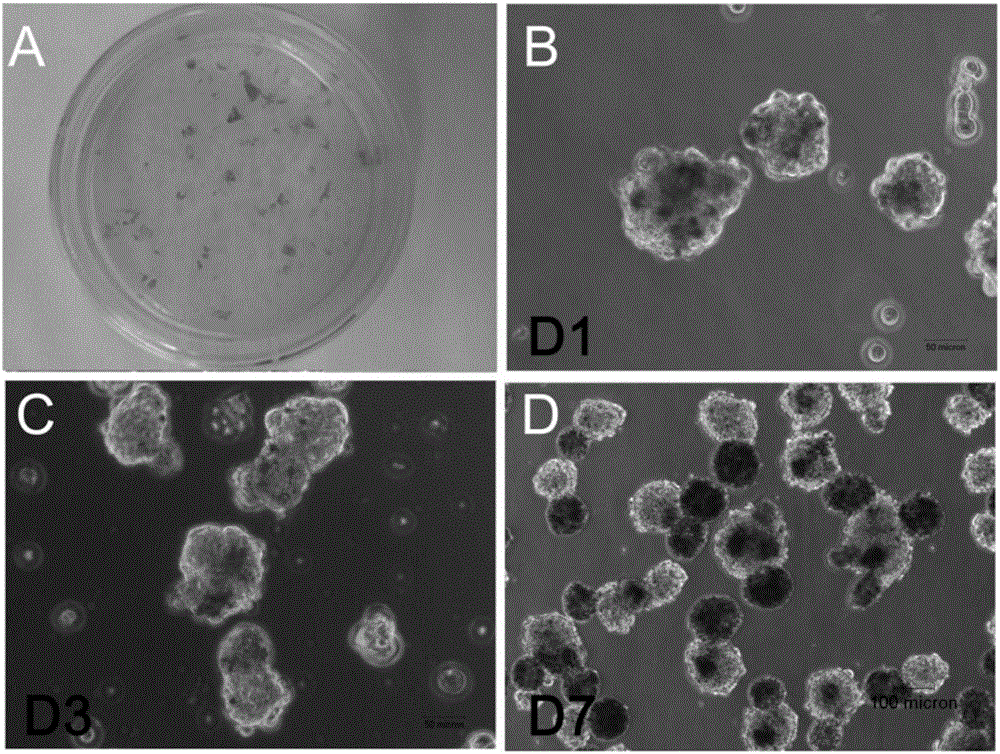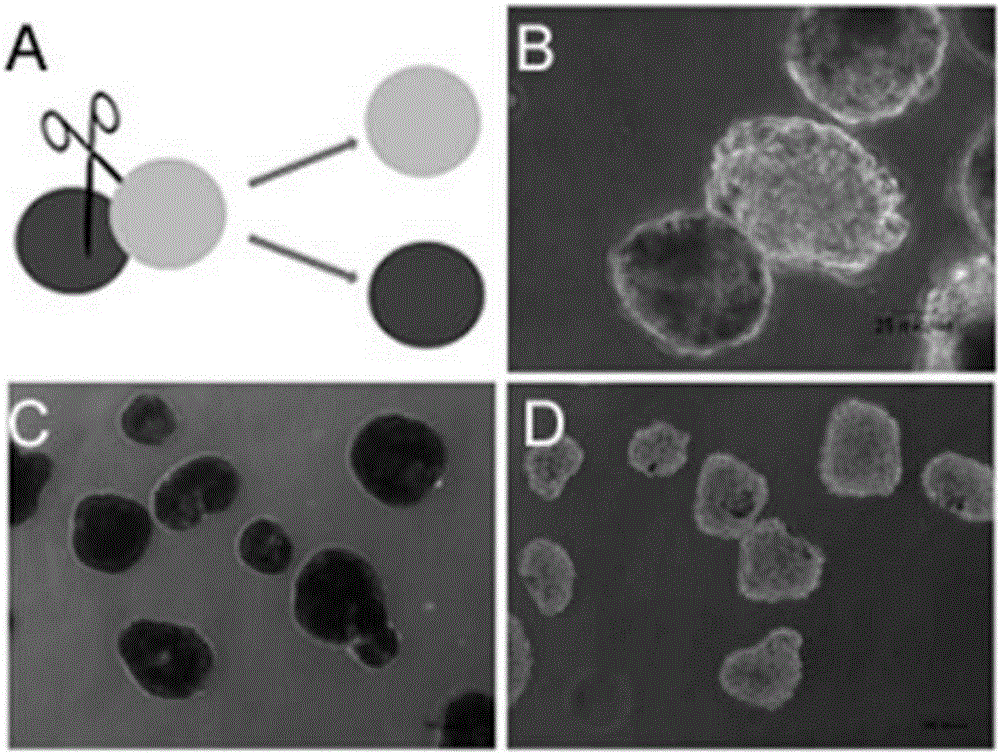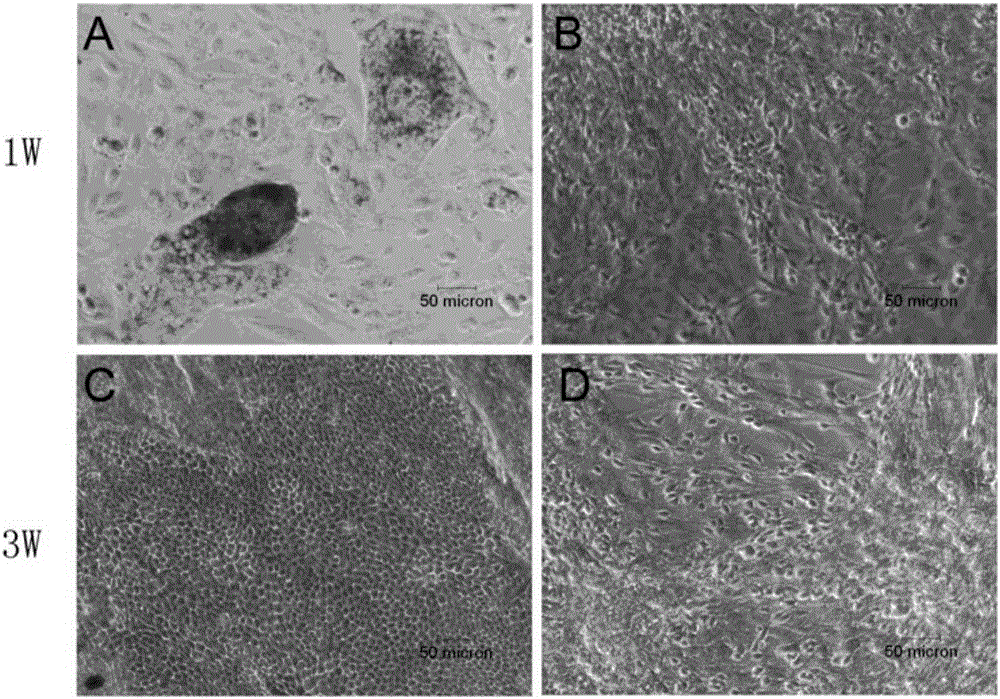Method for efficiently isolating retinal pigmented epithelium (RPE) cells and neural retina progenitor cells (RPC) induced in vitro
A technology for separating bodies and cells, applied in the biological field, can solve the problems of low cell yield, large differences between batches, and long time-consuming, and achieve the effects of high cell purity and yield, simple method and high success rate.
- Summary
- Abstract
- Description
- Claims
- Application Information
AI Technical Summary
Problems solved by technology
Method used
Image
Examples
Embodiment
[0025] This example is a method for efficiently separating retinal pigment epithelial cells and retinal neuron precursor cells induced in vitro.
[0026] In this embodiment, the mixed cell is a mixed cell population containing pigment clumps obtained by differentiation of multiple stem cells, and this method can be used to achieve the purpose of separation.
[0027] In this embodiment, the method for separating cells includes the following steps:
[0028] a. Enzymatically treat the mixed cells with pigment clumps derived from hESCs into single cells, discard the supernatant after centrifugation, add medium to resuspend and inoculate them in a culture dish for suspension culture;
[0029] In this step, the hESCs are the 50th generation H1 cell line; the mixed cells with pigment clumps are obtained after 45 days of differentiation of hESCs by directed induction, as figure 1 A; The enzyme treatment into single cells is to apply 0.25% pancreatin for 20 minutes at 37°C, and pipette into sin...
PUM
 Login to view more
Login to view more Abstract
Description
Claims
Application Information
 Login to view more
Login to view more - R&D Engineer
- R&D Manager
- IP Professional
- Industry Leading Data Capabilities
- Powerful AI technology
- Patent DNA Extraction
Browse by: Latest US Patents, China's latest patents, Technical Efficacy Thesaurus, Application Domain, Technology Topic.
© 2024 PatSnap. All rights reserved.Legal|Privacy policy|Modern Slavery Act Transparency Statement|Sitemap



